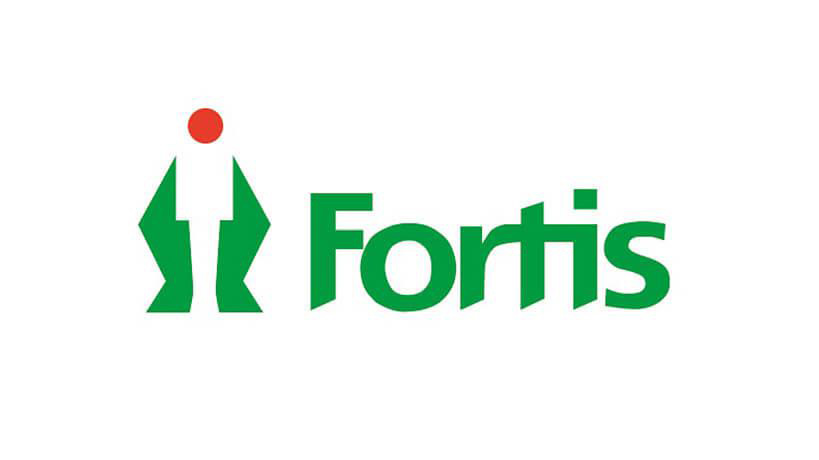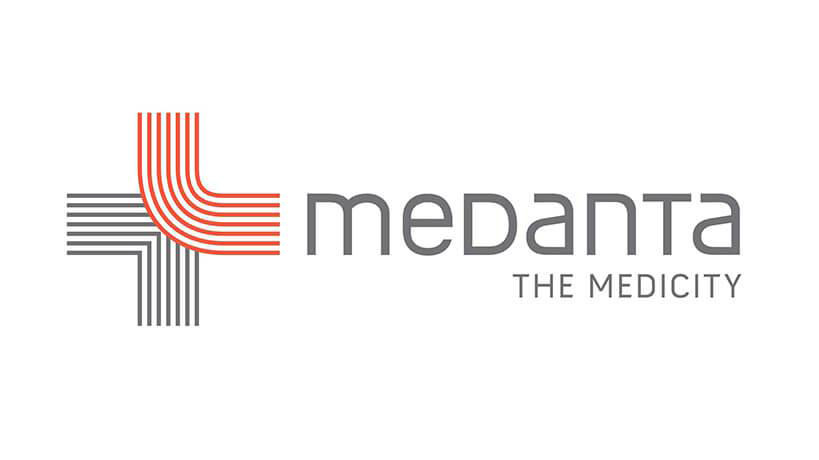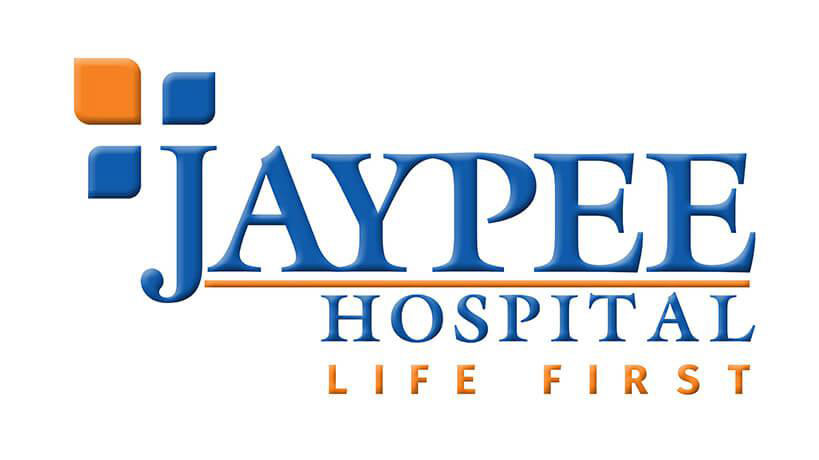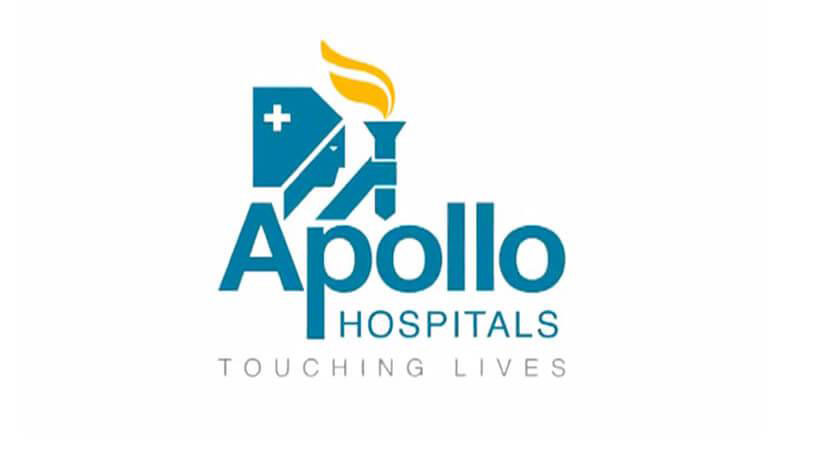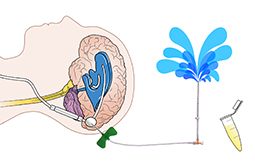
Get Free Treatment Plan From Top Hospital
Attach Medical Report
Cerebrospinal Fluid Shunt Treatment in India
Hydrocephalus is a complex medical condition, which is mostly treated with cerebrospinal fluid shunt placement. Hydrocephalus remains a significant concern for healthcare professionals and affected individuals.
Cerebrospinal fluid (CSF) accumulation within the brain characterizes this condition. It presents unique challenges, necessitating a deeper understanding to provide enhanced care and support for individuals living with it.
This article aims to illuminate the intricate world of Hydrocephalus and cerebrospinal fluid shunt placement and also exploring the cost of shunt surgery for Hydrocephalus in India.
Cerebrospinal fluid Shunt: Overview
Hydrocephalus, derived from the Greek words “hydro”, meaning water and “cephalic”, meaning head, is a condition characterised by the abnormal accumulation of cerebrospinal fluid (CSF) within the ventricles of the brain. CSF normally circulates the brain and spinal cord, cushioning and protecting them. However, Hydrocephalus can occur when there is an imbalance between the production and absorption of CSF or when there is an obstruction in its flow. Hydrocephalus causes the brain to experience pressure as an excessive amount of fluid accumulates inside the skull. It needs quick medical attention to prevent possible brain damage. Inserting a shunt, a device that channels and drains extra fluid away from the brain and into another area of the body where it can be naturally absorbed is one therapy option.
The traditional shunt procedure is still the most common method for treating Hydrocephalus. However, doctors may also suggest an endoscopic third ventriculostomy, a procedure that makes a small hole in the floor of the brain to help the fluid flow properly.
Both procedures offer advantages and drawbacks. In making a recommendation, doctors carefully consider the unique needs of each patient.
Cerebrospinal fluid Shunt: Types
Various types of shunts are used in the treatment of hydrocephalus. Usage of each would depend upon the type of Hydrocephalus present. Hydrocephalus can occur due to various causes. These include congenital malformations, infections, tumours, traumatic brain injuries, and bleeding within the brain. Without proper management and treatment, hydrocephalus can result in serious complications such as cognitive impairments, neurological deficits, and even death. It is crucial to effectively address this condition to mitigate potential risks. Early detection and intervention are crucial for improving outcomes.
Hydrocephalus can be classified into different types with distinct characteristics and treatment approaches. Understanding these types is essential in providing appropriate care and support for individuals with Hydrocephalus. Here are the following types of Hydrocephalus:
Congenital Hydrocephalus: This form of Hydrocephalus is present at birth and is typically caused by genetic abnormalities or developmental disorders during fetal development. It may be identified during pregnancy through routine ultrasounds or shortly after birth due to the enlargement of the infant’s head.
Acquired Hydrocephalus: Acquired Hydrocephalus refers to cases that develop after birth. In some cases, it can occur due to various factors. For instance, infections like meningitis or encephalitis, traumatic brain injury, brain tumours, or bleeding within the brain. Acquired Hydrocephalus can occur at any age and may present with symptoms such as headaches, nausea, and changes in behaviour or cognition.
Communicating Hydrocephalus: It occurs when there is an imbalance between the production and absorption of CSF, leading to its accumulation. In this type, the flow of CSF between the ventricles and the subarachnoid space, the area around the brain, remains open. It can be caused by impaired reabsorption or obstruction of the arachnoid granulations, which drains CSF.
Non-Communicating or Obstructive Hydrocephalus: In non-communicating Hydrocephalus, there is a physical obstruction within the ventricular system that prevents the normal flow of CSF. The blockage results in the buildup of CSF in the ventricles, causing them to enlarge and exert pressure on the surrounding brain tissue.
Normal Pressure Hydrocephalus (NPH): NPH is a type of Hydrocephalus most commonly seen in older adults. It is characterised by enlarged ventricles and increased CSF volume but with normal pressure within the brain. The exact cause of NPH is unknown, but it is often associated with head trauma, meningitis, or subarachnoid haemorrhage. The classic triad of symptoms for NPH includes gait disturbances, urinary incontinence, and cognitive impairments.
Understanding these different types of Hydrocephalus is crucial for accurate diagnosis and appropriate treatment planning.
Cerebrospinal fluid Shunt: Symptoms
The symptoms of Hydrocephalus can vary depending on the individual’s age and the condition’s underlying cause. Recognising these symptoms and seeking medical attention promptly to minimise potential complications is important. Here are some common symptoms associated with Hydrocephalus:
Headaches: Headaches are a common symptom of Hydrocephalus. They may be persistent or intermittent and can range from mild to severe. The headaches are often worse in the morning or upon waking and may be accompanied by nausea or vomiting.
Nausea and Vomiting: Nausea and vomiting are common symptoms of Hydrocephalus, especially in children. The increased pressure within the brain can trigger these symptoms and may be associated with changes in body position or activity.
Vision Problems: Hydrocephalus has the potential to lead to vision issues, such as blurred vision, double vision, or difficulties with focus. These visual disturbances can occur due to increased pressure on the optic nerves or damage to the visual pathways within the brain.
Cognitive and Behavioral Changes: Hydrocephalus can affect cognitive function and behaviour. Changes in behaviour, such as irritability, mood swings, and social withdrawal, may also be observed.
Balance and Coordination Issues: The accumulation of CSF can affect the brain’s ability to control balance and coordination. Individuals with Hydrocephalus may experience difficulty walking, unsteady gait, frequent falls, or clumsiness.
Urinary Incontinence: In some cases, Hydrocephalus can lead to urinary incontinence, where individuals have difficulty controlling their bladder. This particular symptom is more commonly observed in older adults who have been diagnosed with normal pressure hydrocephalus.
Impaired Motor Function: Hydrocephalus can impact motor function, leading to muscle weakness, stiffness, or loss of muscle control. These motor impairments can affect daily activities such as grasping objects, walking, or performing fine motor tasks.
Enlarged Head (Infants): An enlarged head is one of the most noticeable symptoms in infants with Hydrocephalus. The rapid accumulation of CSF causes the baby’s skull to expand, resulting in a larger head circumference than expected for their age.
Sunsetting Eyes (In Infants): Another characteristic sign of infant hydrocephalus is sunsetting eyes. This refers to the downward deviation of the eyes, where the whites of the eyes are visible above the iris, giving the appearance of “setting sun” eyes.
Changes in Appetite And Weight: Hydrocephalus can affect appetite and weight in some individuals. In some cases, individuals may experience changes in appetite that can affect their weight. This can manifest as a decrease in appetite, which may lead to weight loss, or an increase in appetite, resulting in weight gain. These changes may be attributed to the disruption of normal brain function.
It is important to note that not all individuals with Hydrocephalus will experience the same symptoms, and the severity of symptoms can vary. Prompt recognition and diagnosis are crucial to initiating appropriate treatment and support.
Cerebrospinal fluid ShuntTreatment Options
Cerebrospinal fluid shunt placement is one of the most common surgical treatment options for Hydrocephalus. Several types of shunts may be placed depending upon the type of Hydrocephalus. Here are some of the following shunts for hydrocephalus treatment :
Ventriculoperitoneal VP Shunt: Hydrocephalus can often be treated through a surgery called ventriculoperitoneal (VP) shunting, which essentially drains extra cerebral spinal fluid (CSF) and relieves pressure on the brain in most people.
Neurosurgeons perform this surgery by inserting a long tube with a valve into one of the brain’s ventricles and tunnelling it under the skin towards another body part, such as the abdomen or heart chamber, where CSF can more readily be absorbed.
VP shunts typically provide relief within days or weeks, making them suitable for treating children, infants and adults with hydrocephalus caused by other birth defects or brain/spine injuries. They may need to be adjusted or replaced at times.
Ventriculoatrial VA Shunt: During this procedure, your doctor inserts a tube (shunt) into your brain’s ventricles to drain cerebrospinal fluid into your abdomen and alleviate symptoms associated with hydrocephalus. Over time, your body reabsorbs this excess fluid and alleviates symptoms associated with hydrocephalus.
Your doctor will select an optimal location to install this valve based on where the blockage occurred and where excess CSF has built up.
Scheduled periodic shunt reevaluations are essential in identifying signs of increased intracranial pressure, malfunction or infection with your shunt catheter. Close outpatient follow-up is also required to detect evidence of inflammation at the distal end of the shunt catheter; anti-inflammatory medication may provide relief; otherwise, a replacement shunt may be necessary.
Brain Shunt: Hydrocephalus can often be treated surgically using a shunt, a tubing designed to allow excess CSF from brain ventricles to drain away into an alternate location in your body, where it can be absorbed.
Many patients with normal pressure hydrocephalus experience immediate improvement after shunt surgery; symptoms often vanish completely. But the long-term effectiveness of shunts largely depends on other medical and neurological issues that need to be managed.
As with any medical device, shunts may malfunction, including over drainage (where CSF leaves the ventricles faster than it’s produced), which requires immediate medical intervention. Other issues with shunts include blockage, deterioration or infection – our doctors are currently developing solutions to avoid or treat these complications. At the same time, our NIH-funded scientists investigate how bacteria enter into CSF shunts.
Idiopathic Normal Pressure Hydrocephalus Shunts (INPH Shunts): Hydrocephalus can often be treated using a flexible tube known as a shunt – this medical device diverts excess cerebrospinal fluid (CSF) away from the brain’s ventricular system and into another part of the body, such as the abdomen or heart where it can be absorbed more readily.
These shunts require regular monitoring. Sometimes they need replacing or repairing due to becoming clogged up; current methods to diagnose malfunctioning shunts can often be invasive and expensive; in response to this issue, researchers have developed innovative diagnosis techniques.
Ascites Shunt: One rare side effect of VP shunts is ascites (fluid in the abdomen). This usually manifests as an abdominal mass but may also present as diffuse abdominal tenderness. It can be diagnosed through a CT scan or MRI and confirmed through lumbar puncture with ascites fluid analysis (usually negative bacteria cultures).
Shunt malfunction can result in CSF being diverted into the abdominal cavity, where it can be absorbed, increasing intracranial pressure and potentially leading to pseudocyst formation in the peritoneal space.
Cerebrospinal fluid Shunt: Risk & Complications
The most common risk associated with Hydrocephalus is increased intracranial pressure (ICP). This increased pressure can lead to various symptoms, including headaches, pain, and vision problems.
Increased Intracranial Pressure ICP: The brain and spinal cord are bathed in the cerebral spinal fluid within small chambers called ventricles, producing and draining away normally. Still, any blockage will increase pressure within the skull and further production and drainage of this substance.
Hydrocephalus is a serious condition and must be addressed quickly; otherwise, it could cause irreparable brain damage, vision loss, vomiting and seizures – or even seizures or death if left untreated. Hydrocephalus requires immediate medical treatment to be successfully managed.
Infants diagnosed with hydrocephalus usually fare well when treated early; however, their long-term prognosis will depend on what caused it. Individuals with hydrocephalus must receive ongoing follow-ups to identify and address complications. It’s recommended they are followed up on by either a neurosurgeon or paediatrician for best outcomes.
Vision Problems: If the pressure increases, it can damage optic nerves and meninges (thin tissue layers surrounding the brain) and cause permanent eye damage, leading to blurred vision or blindness.
Vision issues associated with hydrocephalus can often remain undetected until someone undergoes a comprehensive ophthalmologic exam. Such exams look for changes in how someone looks, walks or perceives light or colour.
Hydrocephalus can often be treated using a surgical device known as a shunt, redirecting CSF away from the ventricles into another body part where it can be absorbed, such as the abdomen or heart. However, endoscopic third ventriculostomy (ETV) may also be effective; however, not everyone may qualify.
Cognitive And Behavioural Impairments: Hydrocephalus symptoms can range from mild to severe. It may affect learning and memory, leading to communication, behaviour or emotional problems for those with hydrocephalus. People affected often require the support of family, friends and local agencies.
Hydrocephalus can have numerous causes; when unknown, this is known as non-traumatic hydrocephalus (NPH). When the cause can be determined, secondary NPH occurs – typically from a head injury, subdural haemorrhage, tumours or blockage of shunts, and meningitis being key factors.
Preventing injuries that could cause hydrocephalus is vital; everyone should wear a helmet when playing sports, and all children should be properly restrained in car seats. Furthermore, regular health screenings and vaccinations (such as against meningitis–formerly one of the leading causes of hydrocephalus-) should be received by all adults – this will reduce the chances of brain injuries leading to hydrocephalus.
Motor Impairments: Cerebrospinal fluid flows freely throughout the brain’s ventricles. If this doesn’t occur, too much pressure builds up, leading to ventricles enlarging and damaging brain function, leading to intellectual, developmental and physical impairments as a result.
A shunt (a thin tube) can help relieve CSF pressure by draining it into the abdominal region. A one-way valve on the shunt regulates how much fluid passes through at any one time; its operation should remain regular; otherwise, it could malfunction and require regular visits with your physician for checkups and maintenance.
Shunt Complications: Cerebrospinal fluid (CSF) shields your brain and spinal cord. This cushion-like liquid absorbs shock, transports waste products away from your central nervous system, and supports full body functioning.
But if too much CSF is produced or its absorption rate is inadequate, it can build up and pressure other parts of your brain, leading to cognitive and physical symptoms.
Surgical interventions — such as implanting a shunt to drain excess CSF — may help alleviate symptoms; however, malfunctions of such devices could arise due to infection or blockages.
Doctors use lumbar infusion tests (similar to lumbar puncture but using a catheter that stays in place to measure and drain CSF) to detect shunt malfunction. A malfunction can result in either over-drainage or underdrainage of CSF from its normal reservoirs, leading to headaches, seizures and vomiting symptoms.
Cerebrospinal fluid Shunt: Recovery Time
Reducing pressure inside of the skull by draining extra cerebrospinal fluid (CSF), known as hydrocephalus, decreases pressure inside and reduces risks to central nervous system damage as well as alleviating symptoms through surgically draining excess CSF is one of the primary treatments available to those diagnosed with hydrocephalus. Shunt surgery is currently one of the primary forms of hydrocephalus management. Under this procedure, a flexible plastic tube, known as a shunt, is placed into the brain or spinal cord to divert cerebrospinal fluid (CSF) away from it and drain it into an outside fluid source. A one-way valve controls how much CSF drains away. Shunts must be regularly adjusted and monitored for complications like infection, mechanical issues or blockage. Your neurosurgeon may suggest an endoscopic third ventriculostomy procedure to clear away blocked pathways so CSF can escape.
Usually, the recovery time needed for Hydrocephalus is 2-3 weeks or months but some patients may recover early owing to their health. A ventriculoperitoneal shunt is known to have early recovery. But again it would depend from person to person depending upon the type of Hydrocephalus treated, age and stability of the patient to the postoperative condition. Gait disturbances, mild dementia and urinary incontinence may show improvement after a few days of the surgery.
After your shunt surgery, a nurse will check your vitals to ensure you’re recovering well before moving you from the operating room to a recovery room, where family and friends can visit to help make you more comfortable. Your neurosurgeon or APP will inform you when it’s time for you to go home.
Your doctor can test whether or not your shunt is working by conducting a lumbar puncture and extracting CSF for analysis, using a needle passed between two vertebrae at the bottom of your spine (lumbar area). A small amount is then collected in a syringe to measure pressure accordingly.
Brain scans may also be done to check for evidence of increased CSF build-up or skull pressure and rule out other conditions that produce similar symptoms, such as Alzheimer’s disease.
Family and friends can provide valuable assistance while you recover from hydrocephalus shunt surgery at home. You might require help bathing, dressing, grooming, getting in and out of bed, eating, using the restroom and driving. Therapists may teach techniques that enhance balance, strength and coordination and work with speech or language issues caused by hydrocephalus.
People with normal pressure hydrocephalus (NPH) often struggle with speaking, understanding others or remembering events – symptoms which often confuse it with Alzheimer’s or Parkinson’s disease. Due to this misdiagnosis, NPH usually doesn’t come to light until after 50 years old; its symptoms often resemble other illnesses; and recovery time after the surgery with NPH shunt will vary according to the elderly age.
Cerebrospinal fluid Shunt: Top Doctors & Surgeons in India
When it comes to diagnosing and treating Hydrocephalus, consulting experienced and skilled healthcare professionals is essential. Several renowned doctors and surgeons in India specialise in neurology and neurosurgery and have extensive experience managing Hydrocephalus. With vast experience in conducting complex brain surgeries, doctors in India prioritize patient safety and well-being. Their extensive expertise in managing Hydrocephalus cases further demonstrates their commitment to providing comprehensive care with empathy and dedication.
It is essential to consult experienced doctors and surgeons with a proven track record in managing Hydrocephalus when seeking treatment for the condition. Their hospitals boast exceptional expertise, cutting-edge facilities, and advanced technology to deliver unparalleled care and achieve optimal outcomes for individual. Here are some of the top doctors and hospitals in India:
Dr SydhirTyagi, Apollo Hospitals, Delhi NCR, India
Dr Aditya Gupta: Artemis Hospital, Gurgaon, Delhi, India
Dr Bipin S Walia: Max Super Specialty, Delhi, India
Dr Sandeep Vaishya: Fortis Memorial Research Institute, Gurgaon, India
Dr VikasTaneja: Manipal Hospitals, Bengaluru, India
Dr Anil Kumar Kansal: BLK Super Speciality Hospital, New Delhi
Dr MohitGoel, Max Hospital, Delhi, India
Dr Rajendraprasad, Indraprastha Apollo Hospital
Dr Manas Kumar Panigrahi, Kims Hospital, Hyderabad, India
Dr R. Chandrasekhar Naidu, Kims Hospital, Hyderabad, India
Cerebrospinal fluid Shunt: Best Hospitals in India
Hydrocephalus is a complex condition that requires specialised care and support. Individuals can confidently navigate this challenging condition by choosing the right hospital, understanding the treatment costs, and knowing the success rates. India, with its world-class hospitals and expert medical professionals, offers hope and a ray of optimism for those living with Hydrocephalus. Al AfiyaMedi Tour helps you choose the right hospital with the expertise and infrastructure to provide the best care is crucial. Fortunately, India boasts several world-class hospitals that specialise in neurosurgery and are equipped to handle complex cases of Hydrocephalus and Al AfiyaMedi Tour with its connections is very much available for this service to provide the best brain shunt surgery Hospitals in India. Here are some of the top hospitals in India renowned for their excellence in treating Hydrocephalus and providing the best cerebrospinal fluids shunt placement options:
Medanta hospital, Gurguram, Delhi, India
Max Hospital, Delhi, India
Fortis hospital, Gurguram, Delhi, India
Artemis Hospital, Gurguram, Delhi, India
Sanar International hospital, Gurguram, Delhi, India
BLK Max super-speciality Hospital, Delhi, India
Manipal Hospital, Dwarka, Delhi
Metro Hospital, Faridabad, India
Morengo hospital, Gurguram, Delhi, India
Apollo Hospitals, Delhi, India
Kims Hospital, Hyderabad, India
Apollo Hospitals, Hyderabad, India
Cerebrospinal fluid Shunt: Treatment Cost in India
Selecting the right healthcare facility for Hydrocephalus treatment is vital to ensure a successful outcome. The aforementioned hospitals have established a strong reputation and are widely acknowledged for their expertise in managing this condition. So, now we will analyse the Hydrocephalus surgery cost in India.
Shunt Placement Surgery:
Shunt placement surgery is a common treatment option for Hydrocephalus. The surgeon places a shunt device to redirect excessive cerebrospinal fluid from the brain to another part of the body, allowing for absorption. The hydrocephalus shunt surgery cost in India can vary depending on the type of shunt used and the hospital. he shunt surgery cost in India typically ranges from $2400 to $4800 or more, making the cost of shunt surgery in India an important consideration. Some renowned hospitals may charge higher shunt prices in India for the procedure, while smaller ones may offer affordable rates. Researching and choosing a hospital that offers quality care at a reasonable shunt surgery cost in India is essential.
Ventriculoperitoneal (VP) Shunt:
This is the most common VP shunt surgery in India used to treat hydrocephalus in India. It involves placing a VP shunt tube into the brain’s ventricles to redirect the flow of CSF to the abdominal cavity, where the body can more easily absorb it. The VP shunt surgery cost in India ranges from$2400 to $6000.
Programmable VP Shunt:
The cost of a programmable VP shunt in India depends on various factors such as the hospital, the surgeon’s experience, and the severity of the condition. On average, the cost of a programmable VP shunt surgery in India ranges from $3000 to $6000. The cost is significantly less when compared to the cost of the same procedure in the USA or Europe. Additionally, patients travelling to India for medical treatment can expect to save up to 60% of the total cost when compared to the cost of treatment in their home country.
Ventriculoatrial (VA) Shunt:
This is a less common shunt procedure used to treat hydrocephalus that involves placing a tube in the chest that directs CSF to the heart’s right atrium. The cost of a VA shunt procedure in India is typically higher than a VP shunt, ranging from $4800 to $9600.
Brain Shunt:
This brain shunt procedure is rarely used in India and involves placing a tube directly into the brain tissue to drain excess CSF. The brain shunt surgery cost in India is much higher than other types of shunts and can range from $12000 to $18000.
Intraparenchymal shunt (INPH):
This type of shunt procedure treats idiopathic normal pressure hydrocephalus (INPH) and involves placing a tube into the brain tissue to redirect the flow of CSF. The INPH shunt surgery cost in India is typically in the same range as a VP shunt, ranging from $2400 to $6000.
Ascites Shunt:
This type of shunt procedure treats ascites, fluid accumulation in the abdomen. In this procedure, a tube is placed into the abdomen to drain excess fluid. The cost of an ascites shunt procedure in India is generally lower than other shunts, ranging from $1200 to $2400.The cost of a pleural-peritoneal shunt procedure in India is generally similar to an ascites shunt, ranging from $1200 to $2400.
Pleural-Peritoneal Shunt:
This type of shunt procedure treats pleural effusion, which is fluid accumulation in the lungs. In this procedure, a tube is placed between the pleural space in the lungs and the abdominal cavity to drain excess fluid. The cost of a pleural-peritoneal shunt procedure in India is generally similar to an ascites shunt, ranging from Rs. 1,00,000 to Rs. 2,00,000.
Cerebrospinal fluid Shunt: Success Rate In India
India has made significant advancements in neurosurgery, and the success rate for Hydrocephalus treatment in the country is quite promising. With advanced medical technology, highly skilled doctors, and a multidisciplinary approach, Indian hospitals have achieved commendable outcomes in managing this condition.
The success rate of Hydrocephalus treatment in India largely depends on factors such as the patient’s age, overall health, and the severity of the condition. However, with timely diagnosis, appropriate treatment, and diligent post-operative care, the success rate can be as high as 80-90%.
Patients and their families must have realistic expectations and be actively involved in the treatment process. Adhering to the doctor’s advice, regular follow-ups, and maintaining a healthy lifestyle can significantly contribute to the success of the treatment.

Top Cerebrospinal Fluid Shunt Treatment Doctors in India

Best Cerebrospinal Fluid Shunt Treatment Hospitals in India
Book An Appointment for Cerebrospinal Fluid Shunt

Get Free Treatment Plan From Top Hospital
Attach Medical Report

Cost of Cerebrospinal Fluid Shunt Treatment in India

Success Rate of Cerebrospinal Fluid Shunt Treatment in India
Contact Form
Attach Medical Report
Top Doctors & Surgeons in India
Why Choose Us

Personalized Care
24x7 Supports
Top NABH and JCI accredited Hospitals
Free Cost Estimation & Medical Opinion from Specialist
Get Free Tele/Video Consultation
Visa and Traveling Assistance
Post-surgery with Assistance in Follow-ups




